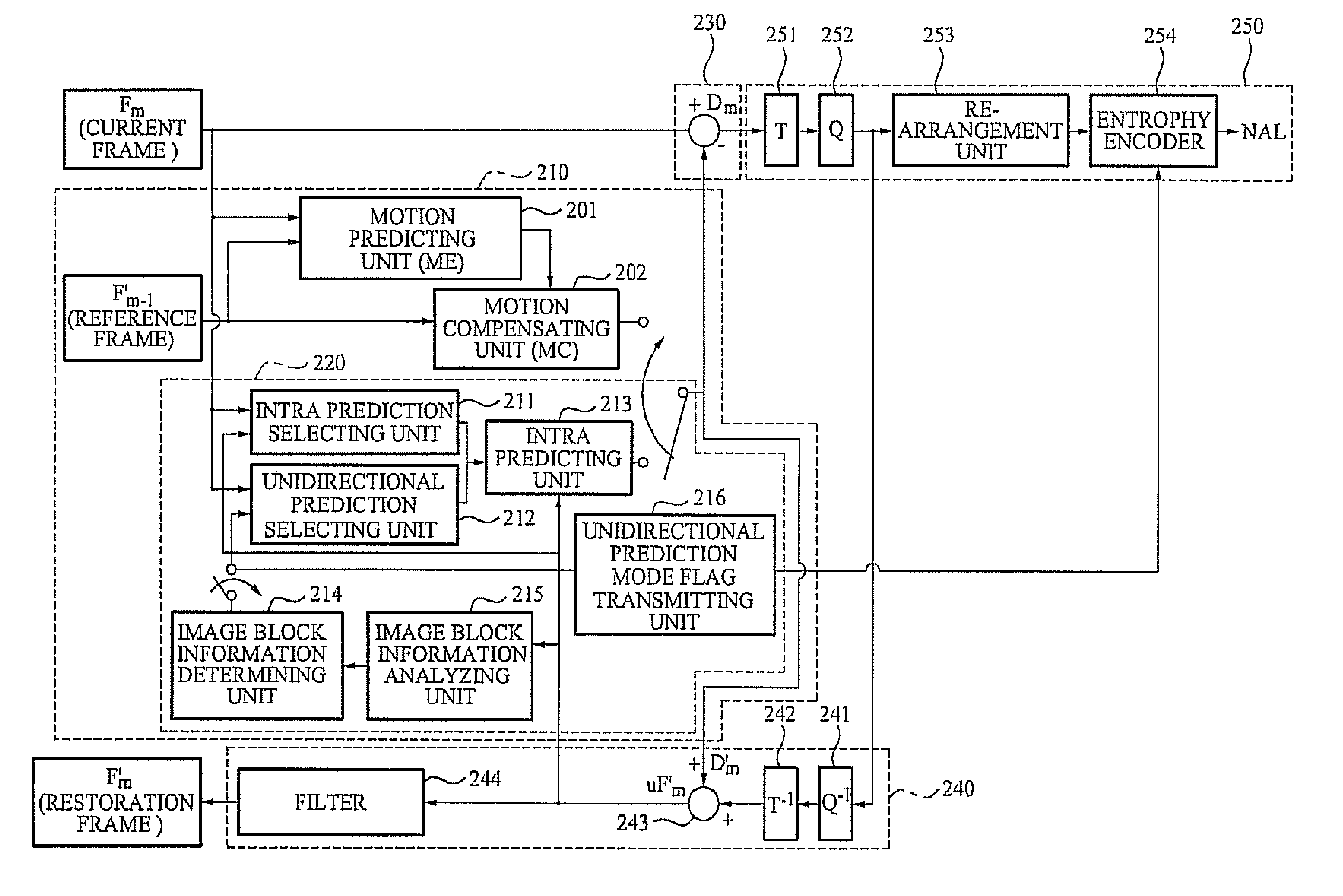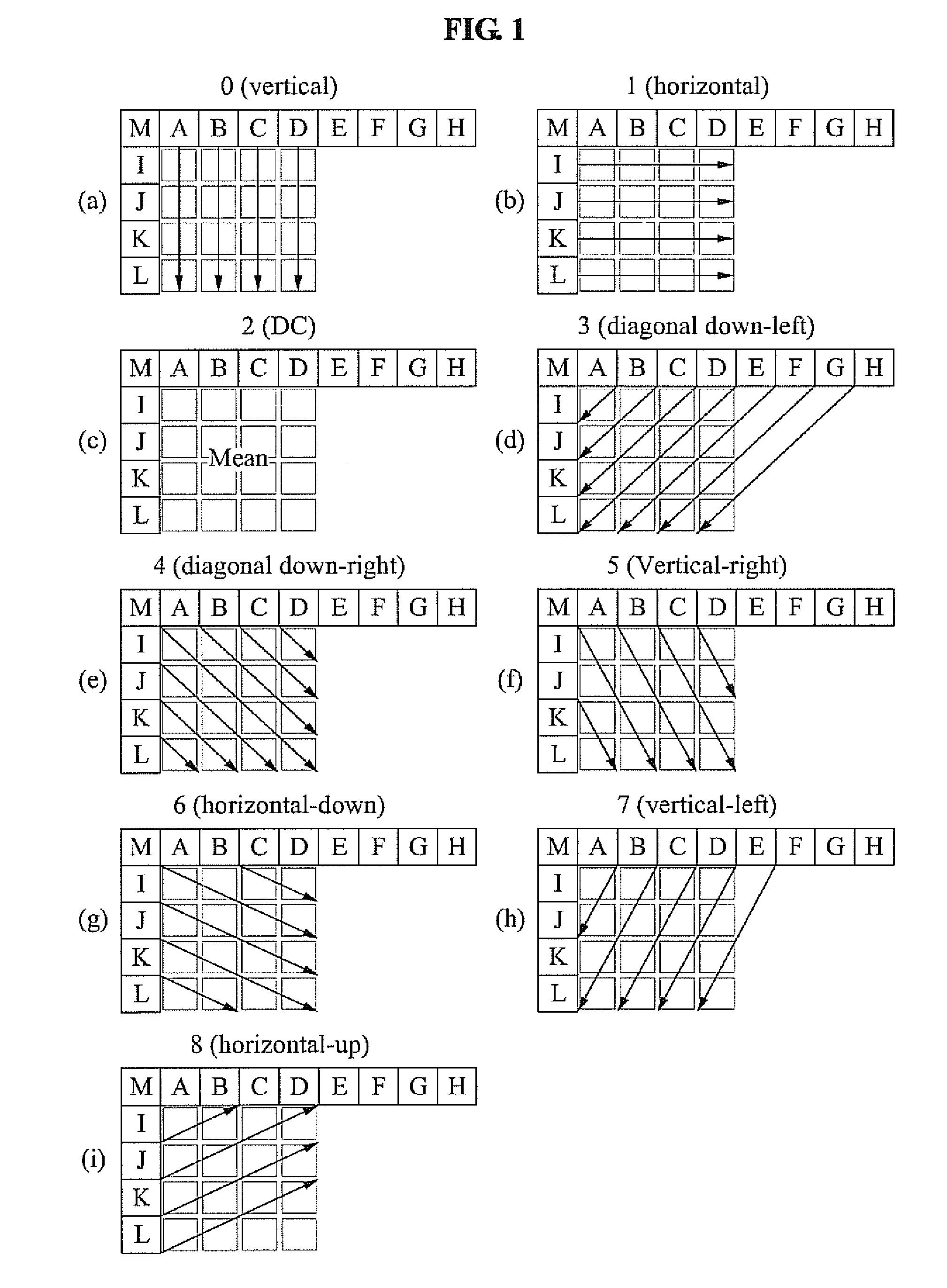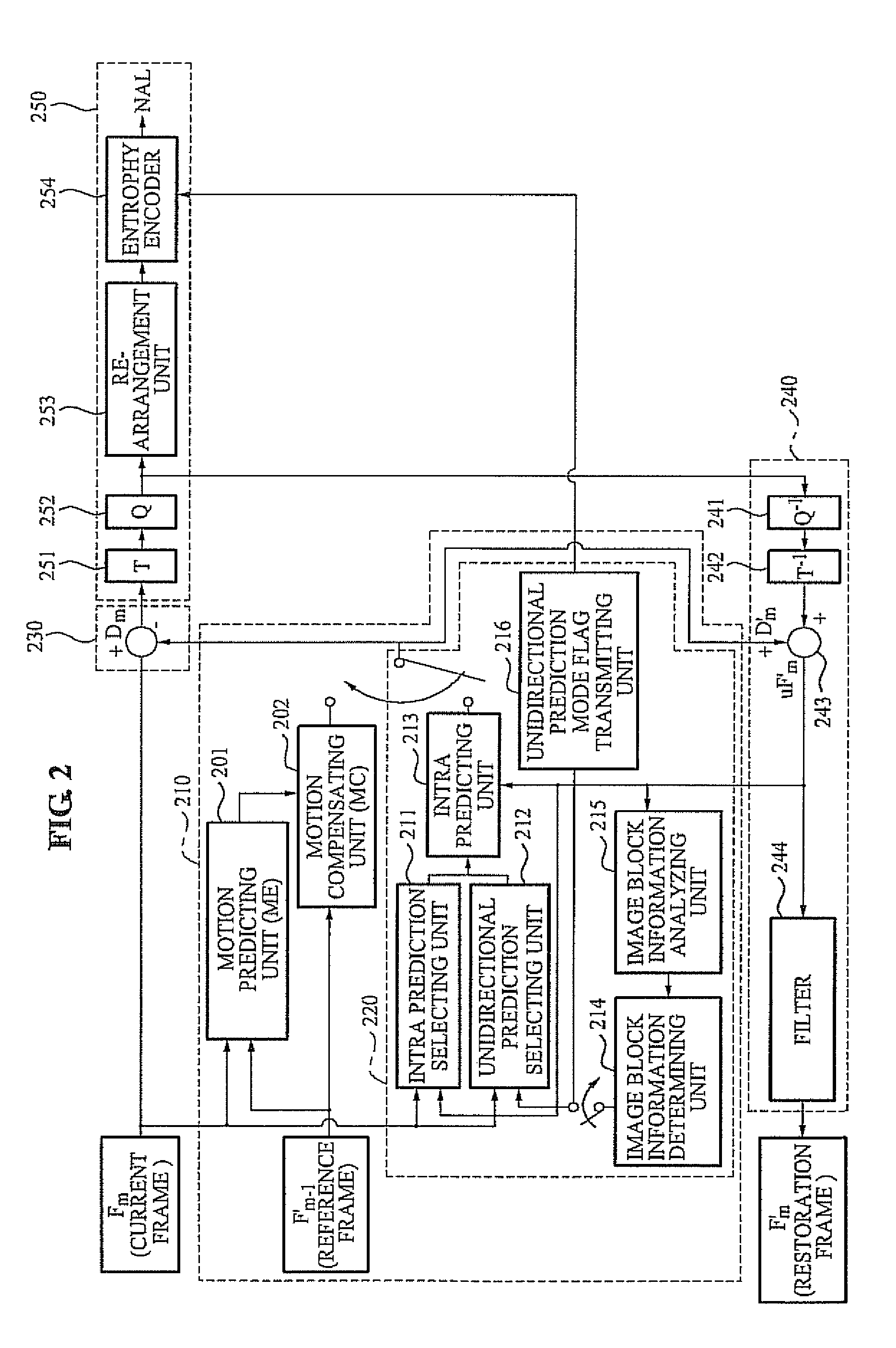Image encoder and decoder using undirectional prediction
a technology of encoder and decoder, applied in the field of image encoding and decoding techniques, can solve the problem of adding unidirectional flag information, and achieve the effect of reducing the capacity of the encoded image and improving the encoded image efficiency
- Summary
- Abstract
- Description
- Claims
- Application Information
AI Technical Summary
Benefits of technology
Problems solved by technology
Method used
Image
Examples
Embodiment Construction
[0031]Reference will now be made in detail to embodiments of the present invention, examples of which are illustrated in the accompanying drawings, wherein like reference numerals refer to the like elements throughout. The embodiments are described below in order to explain the present invention by referring to the figures.
[0032]FIG. 1 illustrates various examples of an intra prediction mode. A macro block intended to be encoded may be divided into at least one sub-block. An image encoder according to exemplary embodiments may calculate a difference between a pixel value of each sub-block and a pixel value of a reference pixel to generate a difference image, and encode the generated difference image.
[0033]When a value of the difference image is small, a relatively greater number of bits may be assigned to data within a small range, and thereby an image may be more accurately encoded to reduce a distortion. Depending on characteristics of an image included in each sub-block, a locati...
PUM
 Login to View More
Login to View More Abstract
Description
Claims
Application Information
 Login to View More
Login to View More - R&D
- Intellectual Property
- Life Sciences
- Materials
- Tech Scout
- Unparalleled Data Quality
- Higher Quality Content
- 60% Fewer Hallucinations
Browse by: Latest US Patents, China's latest patents, Technical Efficacy Thesaurus, Application Domain, Technology Topic, Popular Technical Reports.
© 2025 PatSnap. All rights reserved.Legal|Privacy policy|Modern Slavery Act Transparency Statement|Sitemap|About US| Contact US: help@patsnap.com



